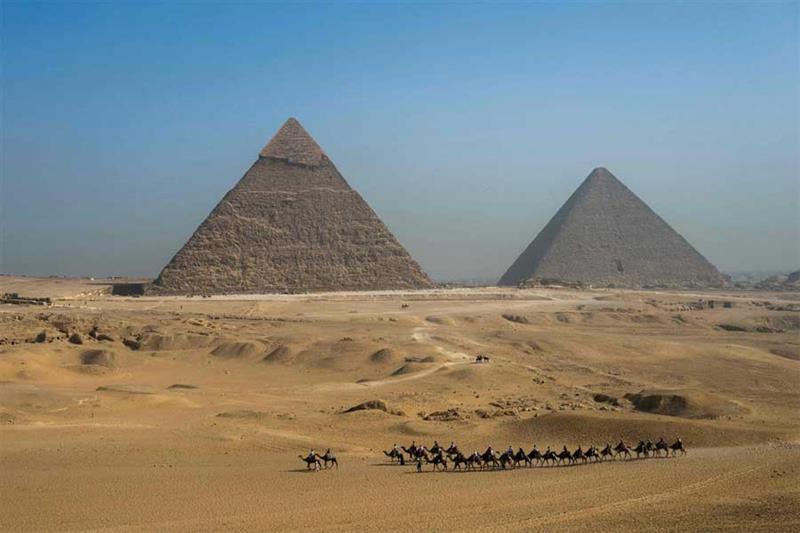However, not everyone is impressed.
"The bulk of this article repeats understandings and conclusions that have been expressed before, said renowned Egyptologist and former Minister of Antiquities Zahi Hawass in a statement with American Egyptologist Mark Lehner, director and president of Ancient Egypt Research Associates.
"It is not true that, as the authors of the study stated,…no convincing explanation as to why these pyramids are concentrated in this specific locality has been given so far," the two Egyptologists jointly said.
They explained that any Egyptology student knows that the Old and Middle Kingdoms pyramids belong to cemeteries west of Memphis Egypt's traditional capital, and that the west was the direction of the dead.
Egyptologists have suggested for more than a century that a western Nile branch or canal along the course of the Libeini channel gave access to the Pyramids.
Fifty-three years ago, they added, French Egyptologist George Goyon developed the idea of a western Nile branch or canal connecting pyramids and their valley temples, and he identified this branch with the Bahr El-Libeini.
They asserted that for more than a century, Egyptologists have investigated the hypothesis that harbours existed at the end of pyramid causeways, in front of valley temples, in natural bays, such as the Abusir embayment, and in wadi mouths, such as the Khentkawes basin in the mouth of the central wadi at Giza, or even farther west, like the basin up into the southern wadi at Dahshur.
For more than a century Egyptologists have discussed the idea that these basins could have received Nile water, at least during the annual flooding when water was as its highest.
"At Giza, for years. we have investigated the subject of a western Nile branch along the course of the Libeini, and how it fed harbours of the Giza Pyramids. We have found and published boundaries and benchmarks on the harbours of Khufu, Khafre and Menkaure."
"Our publications are entirely missing in [the newly published study]," asserted Hawass and Lehner
According to the statement, researchers of the study ignore the discovery in 2013 of the Wadi El-Jarf Papyri that includes, among other documents, the journal of a man named Merer who led a team making deliveries of limestone by boat from the eastern quarries at Tura to Giza for building Khufu's Pyramid.
The discoverer, Pierre Tallet, pointed to the Libeini as marking a western Nile branch, and the southern routes that Merer and his men took to Giza.
The last point both Egyptologists related in the statement that in 1995 they worked with National Geographic Magazine to reconstruct a western Nile branch on the course of the Libeini by digitizing 1:5,000 contour maps produced by the Egyptian Ministry of Housing and Reconstruction.
"We produced a reconstructed colour view of the western Nile branch that is practically the same As the newly published research wrote in their study."
Hawass and Lehner continued, saying that they also produced a scale model of the deep trough marking a relic western Nile channel along the Libeini.
"The major finding of the newly published research was already published in National Geographic twenty-nine years ago [in 1995]."
"We find nothing new in the new research," concluded Hawass and Lehner.

No comments:
Post a Comment